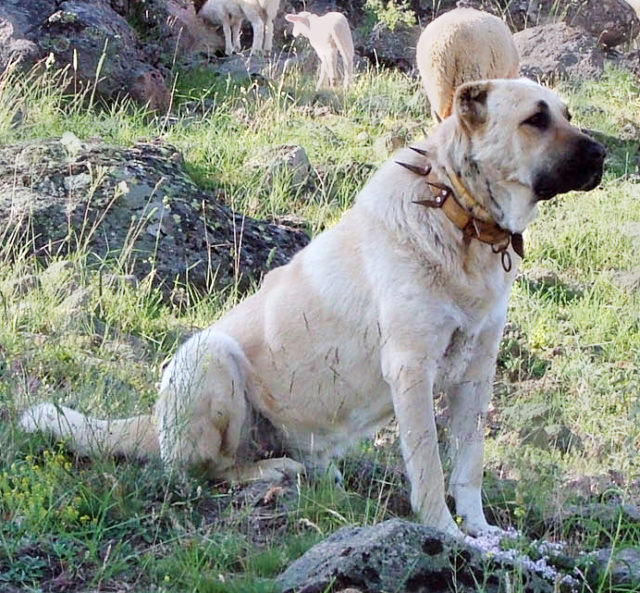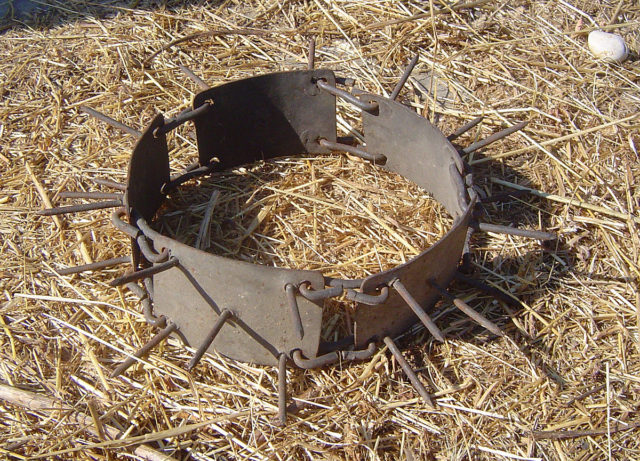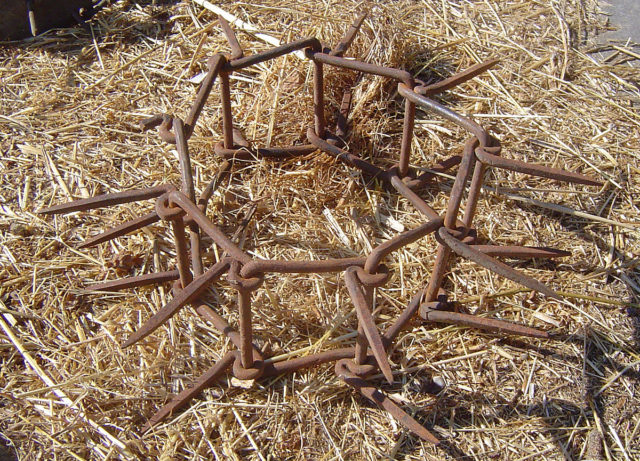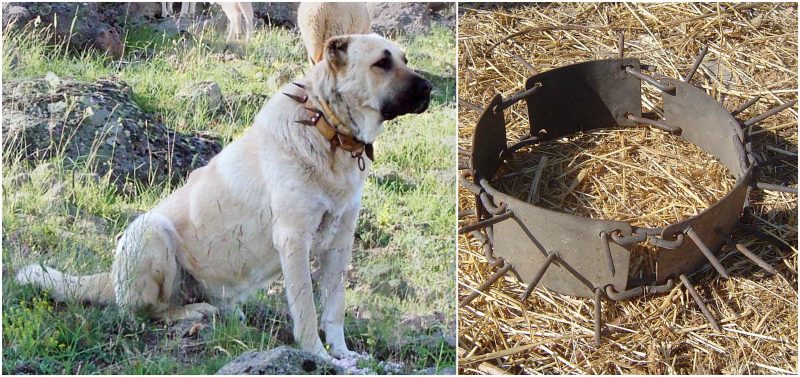A wolf collar is a type of collar designed to protect livestock guardian dogs from wolf’s attacks. This collar is elongated with chiseled spikes and the length of the spikes varies in different places but sometimes they can be three inches long.
These collars originate from Turkey where different regions feature different collar styles, unique to the areas; commensurate with the individual style and skill of the ironsmith as well as the quality of materials at hand. Iron, other metals, even wood in the poorer locales have been used to fashion spike collars.

The purpose of the collar is to protect the dog wearing it when it has to fight the wolves. The spikes provide protection and can also be used as a weapon.
There are some tales that suggest that dogs were only given them after they had killed their first wolf; however, these are normally considered to be inaccurate for the dogs themselves since they might get hurt while scratching his neck with his hind foot.


Traditionally, odds are generally stacked against the predators, since those which dared mingle among the defenseless stock usually found themselves face to face with small multiples of guardian dogs, rather than singular guardians – which is more typical in the USA.
In “The Story of Turkey” (2002) Elizabeth Rassiga describes her observations during her travels in Anatolia: “We shared the space with the last nomad Shepard to leave the high country pastures for the season. Three sheepdogs, a flock of 500 fluffy-coated sheep and a few goats accompanied him. (…) The true guardians, however, were the ferocious sheep dogs, who lazed along the perimeter.
Of the three dogs, two were support dogs; the large, sandy-colored lead dog, wore a two-inch steel collar with four-inch metal spikes around his neck to protect him from the gray mountain wolves that prey upon the sheep. (…) That night, I was awakened by the sound of the approaching bells.
The sheep, who had spent the day trying to stay cool, were now busy grazing. The ringing grew louder, and I realized that the entire flock was headed for my tent. I’d enjoyed watching them across the narrow valley all day, now they’d come to visit. After a while, my tent became totally engulfed by the sheep. (…) Ismet had tutored me on the behavior of sheep dogs. Anything that approaches the flock, from outside, is in peril. I, however, was now at the center of the flock and the dogs would protect me as well.”
According to the folk stories in Turkey, these spiked collars were placed on livestock protection dogs only after they had “been initiated” i.e. after they had killed a wolf. But this doesn’t seem to always be the case. Good protection dogs often prove their value more subtly.
We know of the sheperd’s status not because of these protection collars but rather because of their bravery. We know that shepherds are there to protect the flock because they have proven worthy of the that job. Perhaps collars were specially made and placed on particularly favorite dogs, thus supporting the stories of legendary dogs earning these collars, but the presence of the collar doesn’t necessarily mean that the particular dog has dispatched a wolf.
